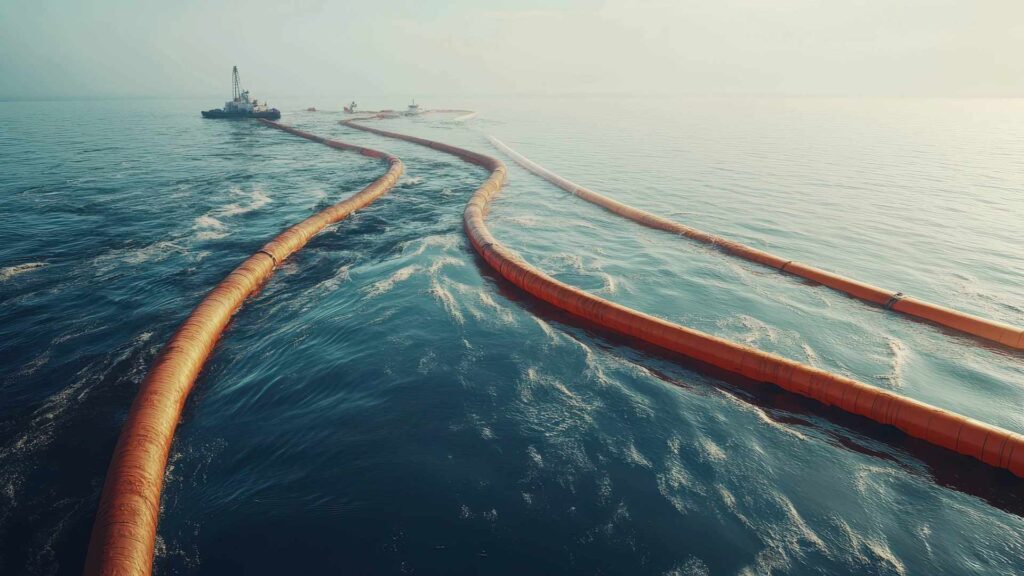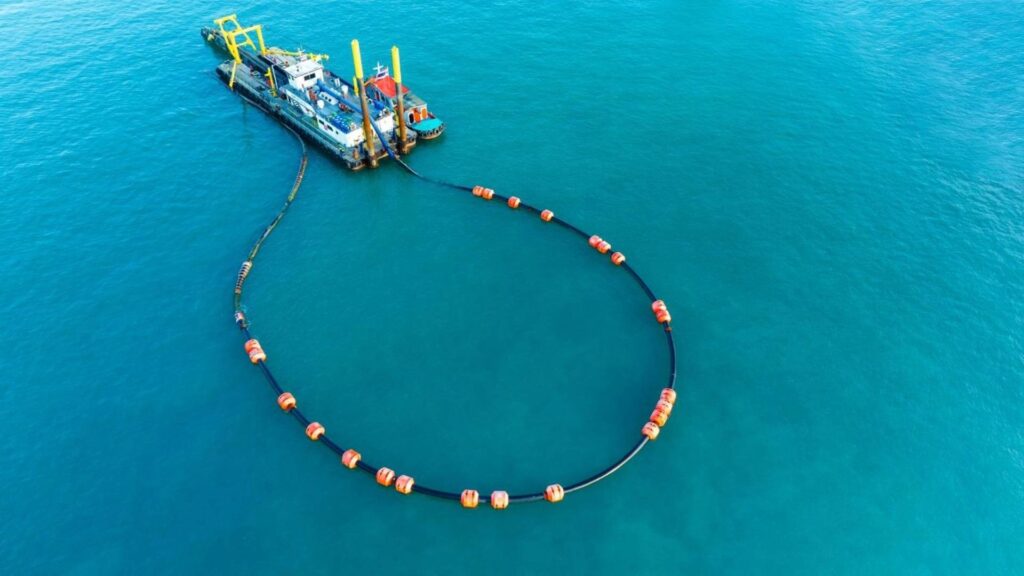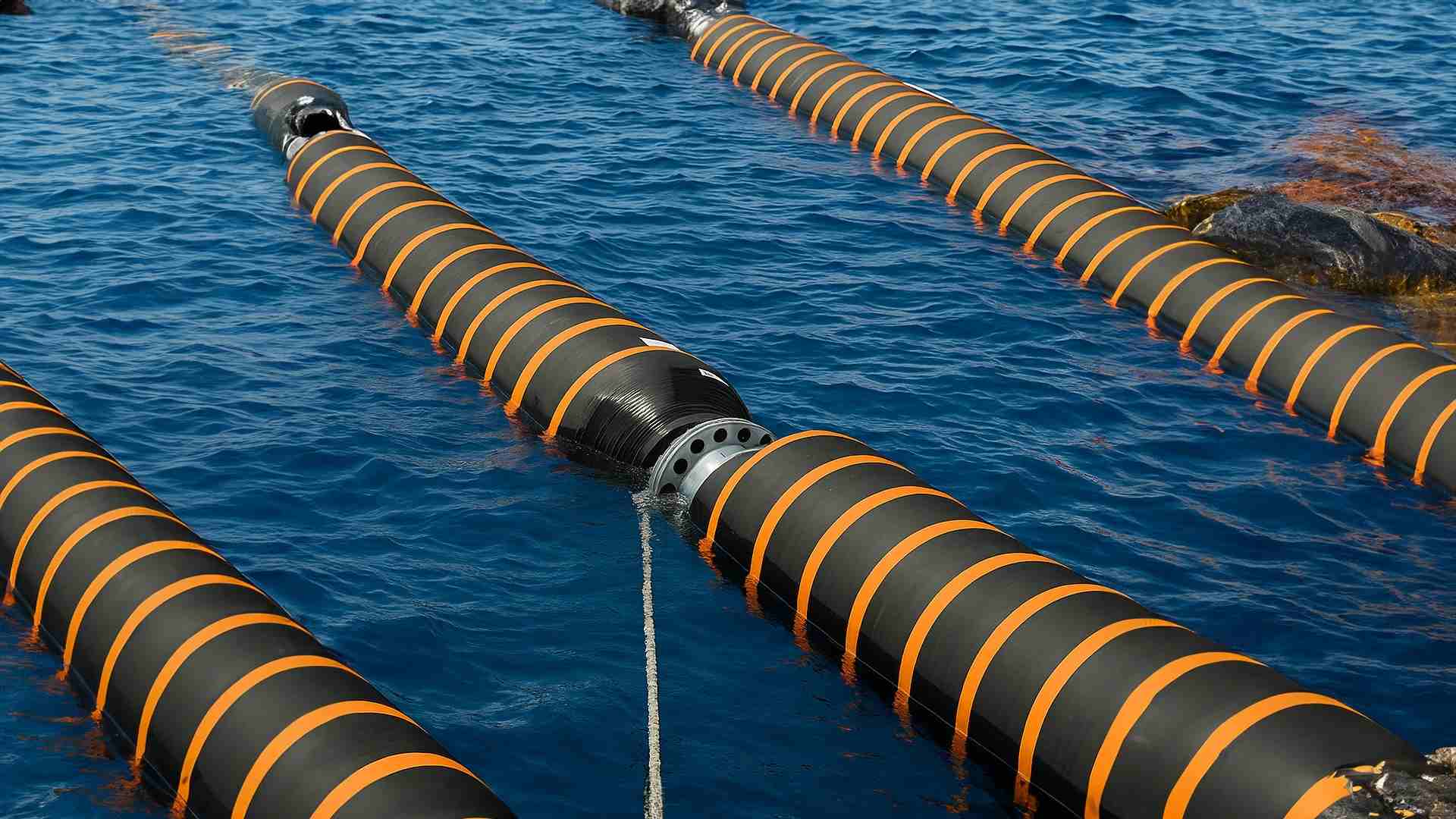In marine, offshore, and dredging industries, efficient and safe transfer of fluids across water bodies is a critical need. One essential solution that enables such operations is the floating hose. Designed to float on the water surface while transporting fluids or slurry, the floating hose is an indispensable component in a wide range of maritime applications. Whether it’s oil transfer from offshore rigs or sediment transport in dredging projects, the floating hose offers durability, flexibility, and performance in even the harshest environments.
This article explores what a floating hose is, how it’s constructed, its primary applications, and the advantages it offers in marine and offshore engineering , while also highlighting the importance of choosing reputable Floating Hose Manufacturers for your operational needs.
What Is a Floating Hose?
A floating hose is a buoyant, flexible pipe designed to transport various liquids or slurry over water surfaces. Unlike conventional hoses that may sink or require complex support systems, a floating hose remains afloat due to integrated flotation materials like closed-cell foam. This unique design prevents sagging or submersion, enabling reliable fluid transfer in changing sea conditions.
Typically made with abrasion-resistant inner linings and reinforced with high-tensile materials, the floating hose is capable of withstanding pressure, waves, and vessel movements. It can be used independently or as part of a floating pipeline system, making it essential for operations where submerged pipelines are impractical or too costly.
Key Applications of Floating Hoses
1. Offshore Oil and Gas Transfer
One of the most important applications of a floating hose is in offshore oil and gas transfer. In offshore oilfields, crude oil or petroleum products need to be moved from production facilities or Floating Production Storage and Offloading (FPSO) units to transport vessels. This is where the floating hose becomes essential.
These hoses are typically deployed as part of a Single Point Mooring (SPM) system, where they connect the tanker to a buoy or manifold anchored offshore. The buoyancy of the hose keeps it afloat even when filled with high volumes of oil, ensuring continuous and stable flow during loading or offloading. The flexibility of the hose helps it move with the vessel and ocean currents, reducing the risk of kinking, rupture, or disconnection.
Additionally, many marine floating hoses are designed to withstand harsh marine conditions including saltwater exposure, high wave action, and heavy-duty cycles. Some are equipped with electrical continuity wires or leak-detection systems to ensure environmental safety.
2. Dredging Operations
Another major field where floating hoses are critical is in dredging operations. Dredging involves the excavation and relocation of underwater sediments to maintain navigable waterways, build land, or support construction. The floating dredge hose connects the dredging equipment — such as cutter suction or trailing suction hopper dredgers — to discharge points like barges, shorelines, or sediment basins.
The floating dredge hose transports a slurry mixture of sand, silt, clay, or gravel through a floating pipeline system. Its buoyancy is crucial in keeping the pipeline afloat on the water surface, allowing for easy movement and reducing wear caused by dragging or submersion.
Key dredging applications where floating hoses are used include:
- Port and harbor maintenance
- Land reclamation and beach nourishment
- River and canal deepening
- Environmental remediation of contaminated sediments
A floating dredge hose is built with abrasion-resistant linings to withstand the high-velocity movement of solid particles. It may also be reinforced with steel rings or additional flotation elements to extend durability and stability during long operations.
3. Marine Construction Projects
Marine construction involves building or reinforcing infrastructure such as docks, breakwaters, seawalls, and offshore platforms. These projects often require the movement of construction materials or fluid agents like concrete, grout, or water.
Here, floating hoses act as temporary pipelines that transport these materials from mixing stations or pumping units to the underwater construction site. Their ability to remain afloat helps ensure that the hose is not damaged by sharp rocks, seabed irregularities, or construction debris. Their flexibility allows them to be maneuvered around or through obstacles with ease.
Applications in marine construction include:
- Jetty and pier development
- Artificial island construction
- Subsea pipeline installation support
- Offshore wind farm foundation work
Because of their reusability and modular construction, floating hoses can be deployed across multiple project sites, reducing costs and increasing efficiency for marine contractors.
4. Environmental Cleanup and Spill Response
Floating hoses are indispensable in environmental applications, especially during oil spill response efforts. When an oil spill occurs, recovery vessels use skimmers to collect surface oil. This recovered product is then transferred via floating hoses to onshore tanks or secondary vessels for treatment or storage.
Due to their quick deployment, floating hoses allow rapid response to minimize environmental damage. Their lightweight design and ease of storage also make them ideal for emergency kits deployed by coast guards and oil spill response teams.
These hoses are also used to deliver dispersants during chemical treatment of oil spills or to transfer contaminated water during environmental remediation projects in lakes, rivers, or coastal zones.
5. Desalination and Water Transport
In coastal and island communities, floating hoses are sometimes used to draw seawater into desalination plants or discharge brine back into the sea. Their floating nature helps them operate even in rough seas and tidal zones, making them an efficient solution in water-scarce regions.
Additionally, in temporary water supply situations (such as disaster relief or construction projects), floating hoses serve as mobile pipelines to deliver clean water across water bodies.
6. Aquaculture and Fisheries
In the aquaculture industry, floating hoses are used to transport water, oxygen-enriched air, or even liquid feed between tanks, nets, and floating farms. Their resistance to biofouling and saltwater corrosion makes them ideal for long-term use in fish farms and marine hatcheries.
Some advanced systems also use floating hoses to manage waste discharge or introduce treated water back into ocean-based enclosures.
Choosing the Right Floating Hose Manufacturers
The performance of your floating hose system heavily depends on the quality of the product. That’s why choosing experienced and reputable Floating Hose Manufacturers is vital. The good manufacturer offers:
- Custom hose lengths and diameters
- Certified pressure ratings and material specifications
- Flange compatibility for various systems
- After-sales service and maintenance support
Global leaders in the field often provide advanced marine floating hose and floating dredge hose models tailored for specific operational environments, from deepwater oil terminals to shallow river dredging.
Construction of a Floating Hose
Constructed to perform in extreme marine environments, a floating hose must endure harsh weather, constant movement, and heavy mechanical loads. Its design is multi-layered, each part contributing to its overall strength, buoyancy, and durability. These layers work together to ensure that the floating hose performs reliably even under the most demanding conditions, such as open-sea oil transfers or aggressive floating dredge hose applications.
1. Inner Liner – Resistance Begins Within
At the core of the floating hose is the inner liner, the component in direct contact with the material being transported. Depending on the application, this could be crude oil, refined fuel, chemicals, or abrasive sediment. This liner is typically made of high-abrasion-resistant synthetic rubber or thermoplastic material. In the case of marine floating hose systems used in dredging, the liner must resist not only chemical attack but also the mechanical erosion caused by solid particles.
Leading Floating Hose Manufacturers often tailor the inner liner material based on project-specific fluid characteristics, pressure, and temperature. The longevity of the hose relies heavily on this layer’s ability to withstand the repeated internal impact and friction of the contents moving through it.
2. Reinforcement Layer – Strength and Structural Integrity
Surrounding the inner liner are one or more reinforcement layers made of high-tensile synthetic textiles or spiral-wound steel wire. This layer imparts the floating hose with the structural integrity needed to resist internal pressure and external mechanical stresses such as waves, tidal pull, or movement caused by connected floating structures.
In floating dredge hose applications, the hose often has to flex while carrying heavy slurry at high velocity. The reinforcement must therefore strike a balance between rigidity and flexibility, allowing the hose to maintain its shape without collapsing or rupturing under pressure.
3. Flotation Layer – Ensuring Buoyancy
One of the defining characteristics of a floating hose is its ability to remain afloat on the water’s surface. This is made possible by the flotation layer, which is usually composed of high-density closed-cell polyethylene foam or other buoyant materials. This layer ensures that the hose does not sink under the weight of its contents or external forces.
The thickness and type of flotation used are critical, particularly in marine floating hose applications where environmental conditions like wave height, current, and cargo density vary significantly. The design ensures that even if the hose takes on water due to wear or damage, its buoyancy remains uncompromised.
4. Outer Cover – Protection Against the Elements
The outer cover serves as the hose’s first line of defense against the external environment. Constructed from UV-resistant, saltwater-tolerant rubber or polyurethane compounds, this layer protects against abrasion, impact, ozone degradation, and chemical spills.
Since floating hose systems are deployed in marine environments, the outer cover must endure continuous exposure to sunlight, salt, marine growth, and physical damage from other vessels or floating debris. Some Floating Hose Manufacturers even incorporate additional wear rings or protective spirals to enhance this layer’s resistance to abrasion.
5. End Connections – Seamless Integration
End connections are essential for integrating the floating hose into an existing fluid transfer system. These can include fixed flanges, swivel flanges, or quick-coupling systems, all designed to accommodate high flow rates and operational pressures.
Floating Hose Manufacturers typically customize these connectors to meet the specific requirements of each project, considering factors such as fluid type, hose size, pressure rating, and the need for quick disconnect during emergencies.
Tailored for Performance by Leading Floating Hose Manufacturers
Modern floating hose construction is a product of both material science and field-tested engineering. Reputable Floating Hose Manufacturers constantly refine designs to meet international safety and performance standards, such as ISO 28017 for marine floating hose systems.
The selection of materials, the layering sequence, and the integration of special features like anti-whip cables, burst indicators, or internal wear sensors ensure that these hoses are not only functional but also safe and efficient over long operational lifespans.
In floating dredge hose applications, durability is especially crucial. Sediment-laden water is highly abrasive, and improper hose design can lead to frequent failures, costly downtime, and environmental risks. Hence, Floating Hose Manufacturers focus heavily on reinforcement density, liner thickness, and end-connection integrity to meet the rigorous standards of dredging operations.
Key Advantages of Using a Floating Hose
Buoyancy in Challenging Environments
The most obvious advantage of the floating hose is its ability to remain afloat. This reduces drag, eliminates the risk of snagging on underwater structures, and ensures smoother operations in dynamic water conditions.
Operational Flexibility
Marine Floating Hoses can bend, flex, and move with waves and tides, maintaining continuous fluid flow even in rough seas. This makes them ideal for offshore and nearshore use where fixed pipelines are impractical.
Durability and Strength
The multi-layered construction of a floating hose allows it to resist high pressure, abrasion, and corrosive elements. This results in a longer lifespan and reduced maintenance.
Ease of Deployment and Retrieval
A Floating Dredge Hose or oil transfer hose is relatively easy to transport, install, and remove. This makes it perfect for temporary projects or locations with seasonal operations.
Customizability
Top-tier Floating Hose Manufacturers offer customized hose solutions based on application, material type, flow capacity, and environmental conditions. Whether you need a lightweight hose for emergency response or a heavy-duty slurry line for dredging, the right manufacturer can deliver a tailored product.
Innovations in Floating Hose Technology

With increasing environmental concerns and the need for efficient resource management, Floating Hose Manufacturers are innovating rapidly. Modern hoses now feature:
- Smart monitoring sensors for leak detection
- Eco-friendly materials for reduced environmental impact
- Modular designs for faster deployment
- Enhanced abrasion resistance for longer service life in dredging operations
These innovations are particularly valuable in industries where safety, reliability, and environmental compliance are top priorities.
Floating Dredge and Marine Hoses: Key to Operational Success

The floating hose plays a pivotal role in offshore and dredging operations. From oil transfer at sea to sediment movement in coastal engineering, its ability to remain buoyant, flexible, and durable makes it an essential piece of marine equipment.
Supported by advancements from top Floating Hose Manufacturers, these hoses continue to improve in terms of efficiency, safety, and adaptability. Whether you’re selecting a Floating Dredge Hose for a major reclamation project or a Marine Floating Hose for offshore oil handling, the right hose can ensure smoother operations, reduced downtime, and better overall performance.
Investing in a high-quality floating hose system from a trusted manufacturer is not just a technical decision—it’s a strategic one that contributes to the long-term success and safety of your marine projects.
